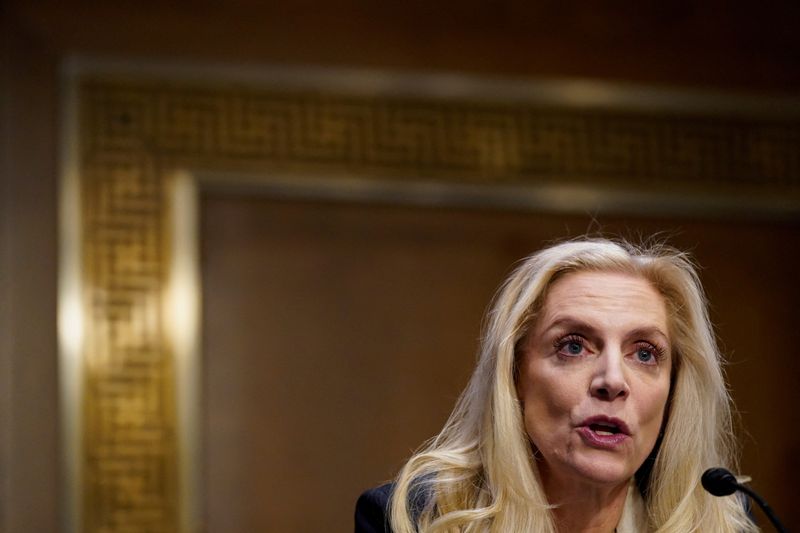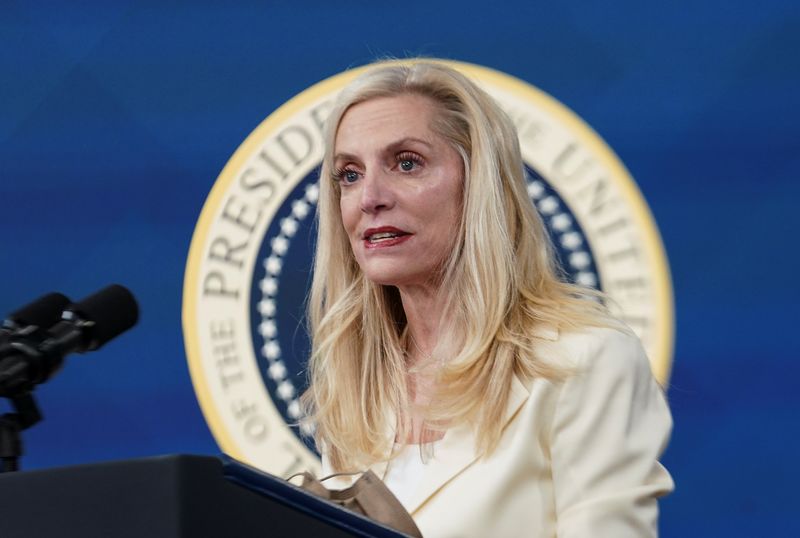By Howard Schneider and Ann Saphir
(Reuters) -The Federal Reserve will likely soon slow its interest rates hikes, Fed Vice Chair Lael Brainard signaled on Monday, as the U.S. central bank tries to figure out how high borrowing costs need to go and how long they should stay there to bring down inflation.
"I think it will probably be appropriate soon to move to a slower pace of increases, but I think what’s really important to emphasize is... we have additional work to do," Brainard said in an interview with Bloomberg in Washington.
"It's really going to be an exercise on watching the data carefully and trying to assess how much restraint there is and how much additional restraint is going to be necessary, and sustained for how long, and those are the kinds of judgments that lie ahead for us," she said.
Brainard is the second ranking Fed official in as many days, along with Governor Christopher Waller on Sunday, to indicate the Fed is ready to begin moving in smaller rate hike increments as soon as its December meeting, while still emphasizing what Brainard called the central bank's "resolve" to keep pushing rates higher as needed to battle a surge of inflation.
The Fed raised its policy rate early this month to a range of 3.75%-4%, its fourth straight 75-basis-point interest-rate hike, as it seeks to rein in demand for goods, services, and labor so as to reduce inflation that's running more than three times the Fed's 2% target.
Fed Chair Jerome Powell has signaled that the central bank's next move may be smaller to give the Fed more scope to judge how the rapid rate hikes it has approved so far this year are affecting the economy, an impact that may only be apparent over many months.
But he also signaled the policy rate may next year peak at a rate higher than the 4.6% level that most policymakers had expected in September.
Brainard's remarks underscored that view.
"It makes sense to move to a more deliberate and a more data dependent pace as we continue to make sure that there's restraint that will bring inflation down over time," she said.
The Fed is balancing what it sees as a need to curb household and business spending and credit to try to lower inflation against the risk that if it tightens financial conditions too fast or too much it could trigger a more dramatic economic slowdown than needed, or even push the United States into recession.
Data released last week showing a slowdown in overall inflation and particularly in goods prices was "reassuring," Brainard said, and so far many economic indicators have showed continued strength despite the Fed's aggressive rate increases, with hiring in particular still strong.
But Brainard, Waller and other officials agree they will need to see the pace of price changes continue to slow to become comfortable the Fed is getting control of the situation, noting that some key parts of the price index, such as rents, may not peak until "well into next year."
Yet there have been tremors, and perhaps most notably in potential layoffs in the tens of thousands coming at high-profile tech companies like Meta, Twitter and Amazon (NASDAQ:AMZN).
As the Fed's policy rate gets more restrictive, Brainard said, the balance of risks will become more "two-sided," meaning that higher interest rates could start slowing the labor market enough to begin to endanger the Fed's second mandate of maximum employment.
Currently the U.S. unemployment rate is at 3.7%, below the 4% level that most policymakers believe reflects a long-run sustainable rate.

Recent labor market data suggests "cooling," Brainard said, and lessening wage pressures.
"As we go forward...risks are going to be two sided if we get into more restrictive or further into restrictive territory," she said, "so we'll be balancing those considerations."
